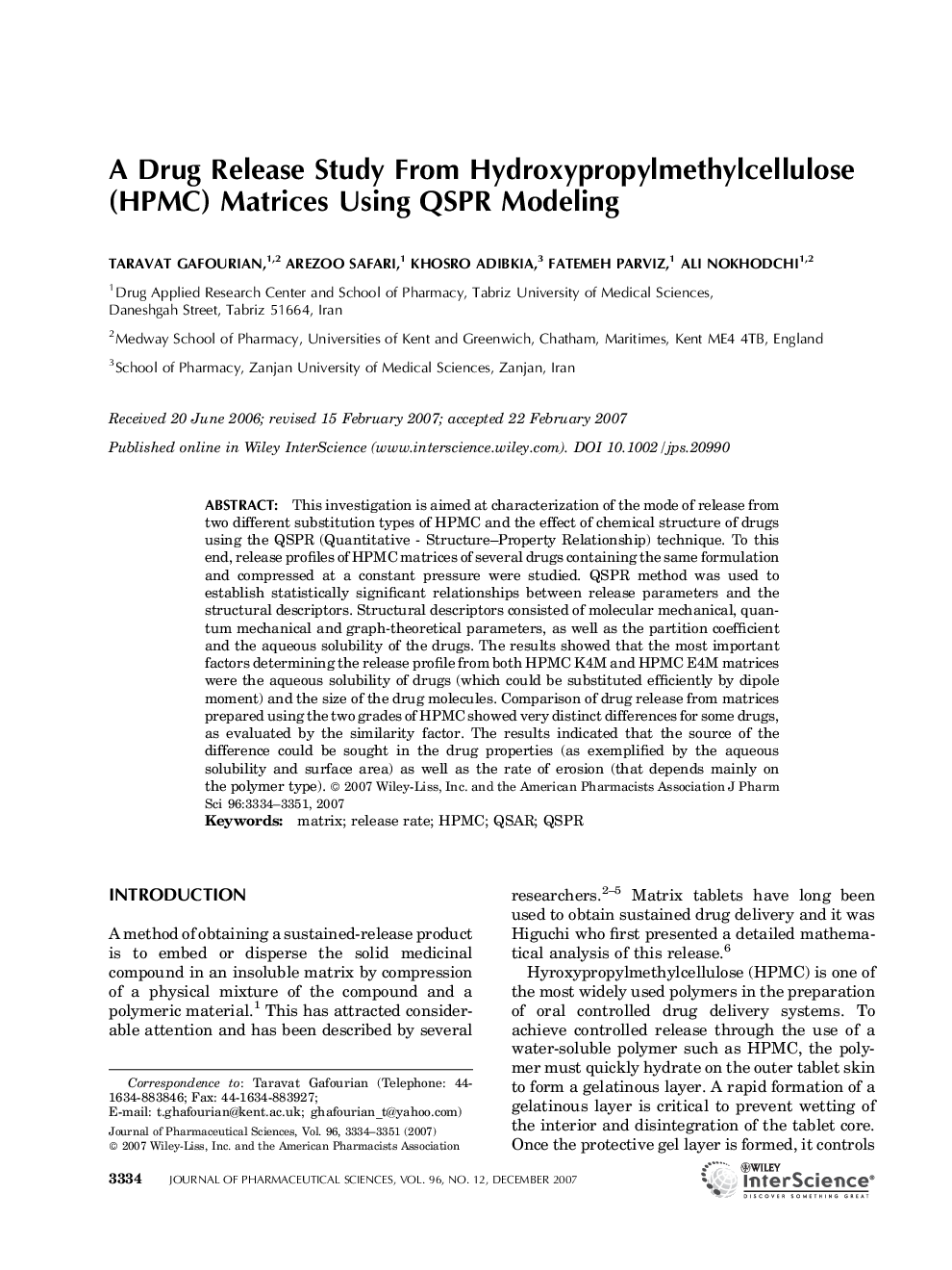| Article ID | Journal | Published Year | Pages | File Type |
|---|---|---|---|---|
| 2487633 | Journal of Pharmaceutical Sciences | 2007 | 18 Pages |
Abstract
This investigation is aimed at characterization of the mode of release from two different substitution types of HPMC and the effect of chemical structure of drugs using the QSPR (Quantitative â Structure-Property Relationship) technique. To this end, release profiles of HPMC matrices of several drugs containing the same formulation and compressed at a constant pressure were studied. QSPR method was used to establish statistically significant relationships between release parameters and the structural descriptors. Structural descriptors consisted of molecular mechanical, quantum mechanical and graphâtheoretical parameters, as well as the partition coefficient and the aqueous solubility of the drugs. The results showed that the most important factors determining the release profile from both HPMC K4M and HPMC E4M matrices were the aqueous solubility of drugs (which could be substituted efficiently by dipole moment) and the size of the drug molecules. Comparison of drug release from matrices prepared using the two grades of HPMC showed very distinct differences for some drugs, as evaluated by the similarity factor. The results indicated that the source of the difference could be sought in the drug properties (as exemplified by the aqueous solubility and surface area) as well as the rate of erosion (that depends mainly on the polymer type). © 2007 WileyâLiss, Inc. and the American Pharmacists Association J Pharm Sci 96: 3334-3351, 2007
Keywords
Related Topics
Health Sciences
Pharmacology, Toxicology and Pharmaceutical Science
Drug Discovery
Authors
Taravat Gafourian, Arezoo Safari, Khosro Adibkia, Fatemeh Parviz, Ali Nokhodchi,
